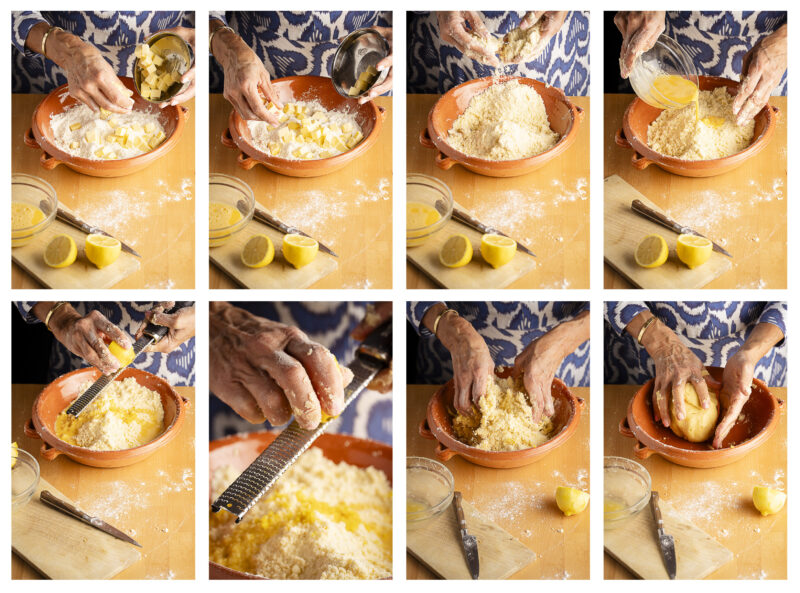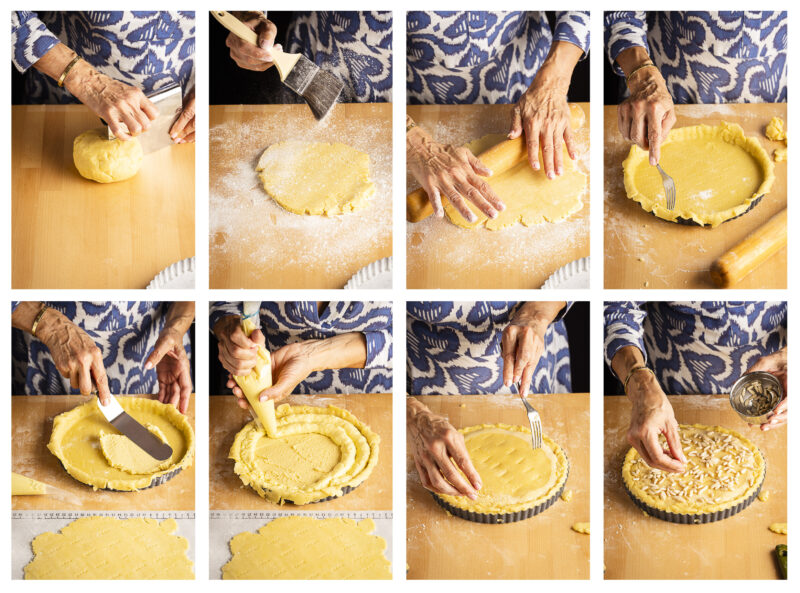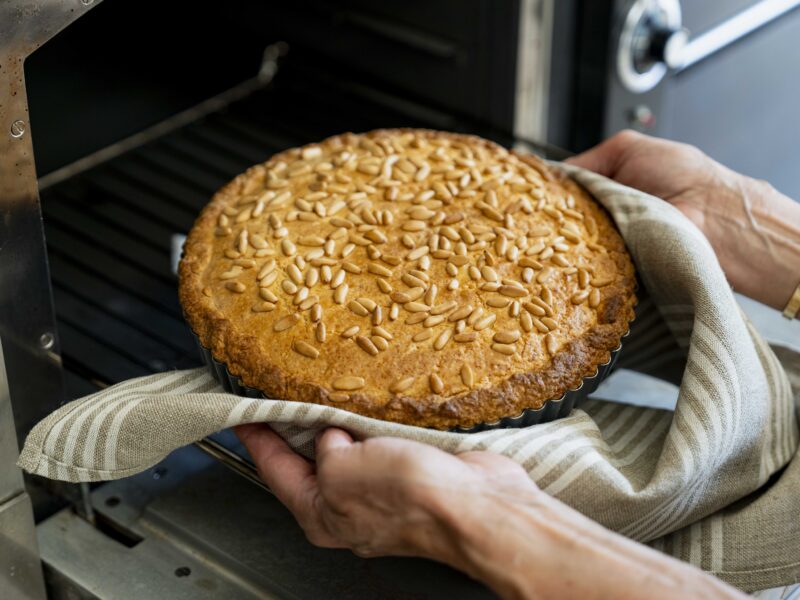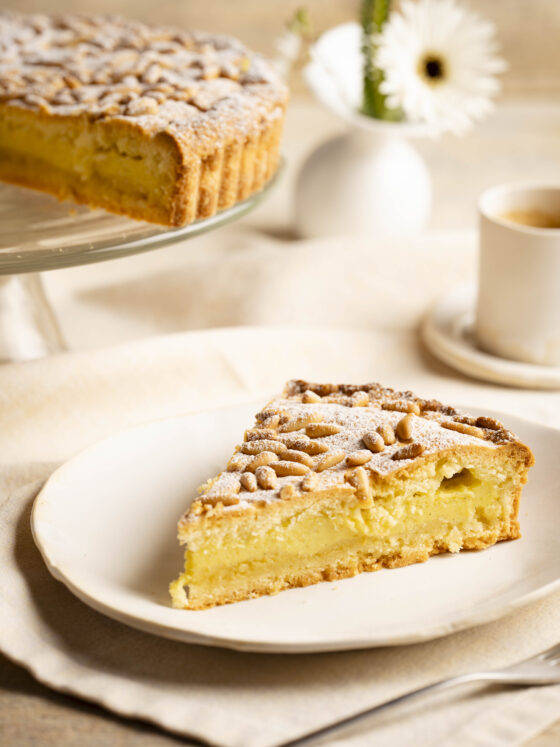Torta della nonna with frangipane - my Roman inspiration
Not long ago, I found myself in Rome on a sun-drenched afternoon, wandering into coffee bar Marzapane. The place had been recommended to me – always a promising sign – and I was curious to see what sweet treasures might be waiting behind the counter. I expected a good espresso, perhaps a delicate pastry. What I didn’t expect was inspiration for a new twist on an Italian classic.
But that’s exactly what I found. At the counter full of dolci, stood a cake that looked comfortingly familiar: torta della nonna. Yet one bite told me this was no ordinary version. Beneath the classic dusting of icing sugar and toasted pine nuts was a subtle, almond-like richness. Frangipane. Unexpected, but it gave the cake something extra - richer, fuller, but still unmistakably Italian.
Back home, the idea lingered. What if I created my own version? A cake that sits somewhere between Tuscan tradition and that Roman surprise. And so, this recipe was born.
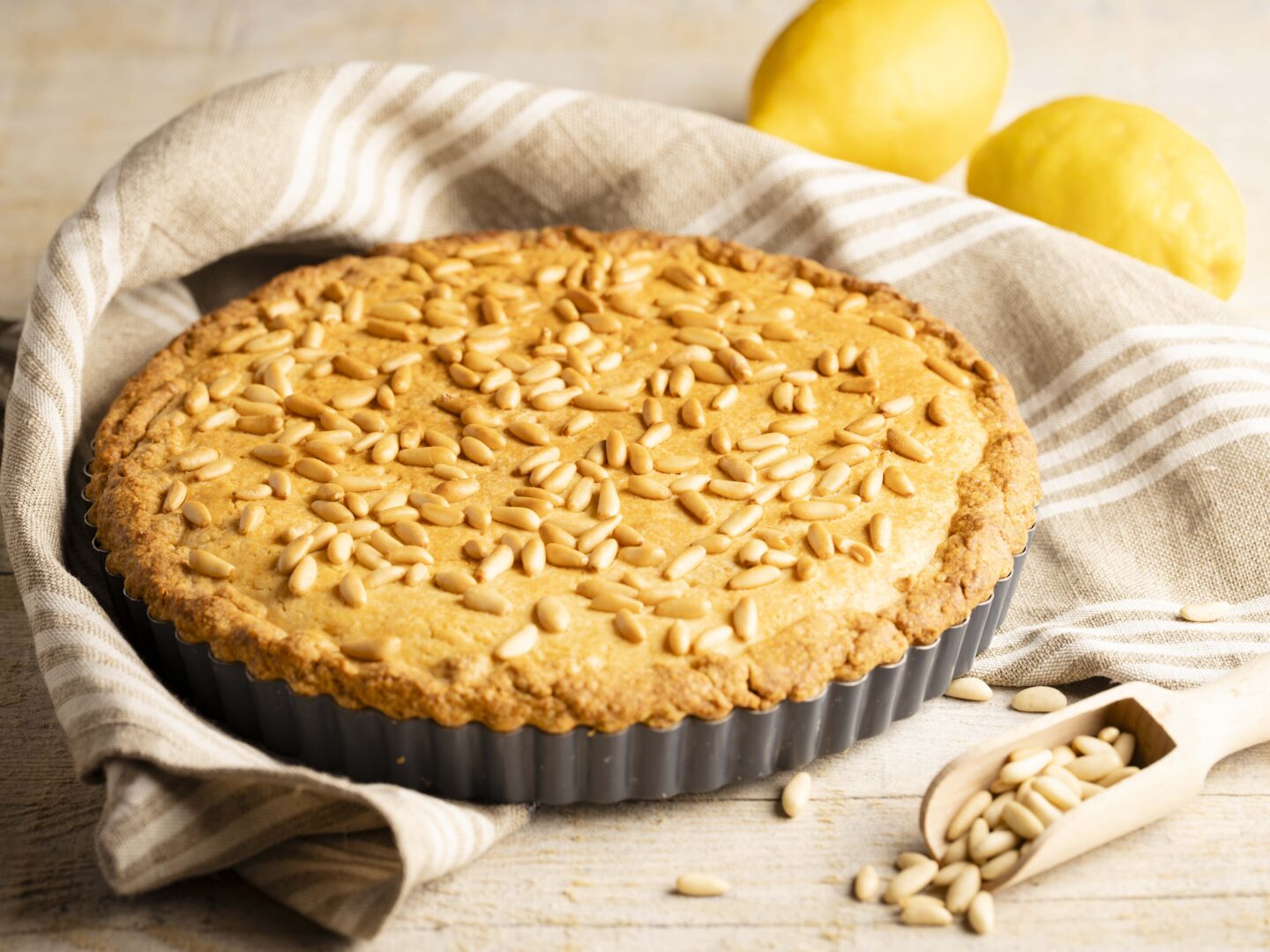
The origins of torta della nonna
Torta della nonna – literally “grandma’s cake” – is a beloved classic of Italian cuisine. Despite its homely name, the cake likely didn’t originate in a family kitchen, but rather in a professional one. Its true origins remain a matter of debate: both Tuscany and Liguria lay claim to its creation.
The most widely accepted story credits Florentine chef Guido Samorini, who introduced the dessert at Ristorante San Lorenzo. But it’s entirely possible that a similar cake emerged in Liguria, with the same simple but sophisticated combination of shortcrust dough, pastry cream and pine nuts.
What is torta della nonna?
Torta della nonna is a classic Italian dessert made with a crisp shortcrust pastry base filled with silky pastry cream, delicately scented with vanilla and lemon zest. The top is traditionally finished with toasted pine nuts and a dusting of icing sugar.
There are several variations: some versions are open-faced, others are covered with a second layer of pastry or decorated with a lattice crust, much like a crostata. More recently, a version with a thin layer of frangipane has emerged—like the one I tasted in Rome.
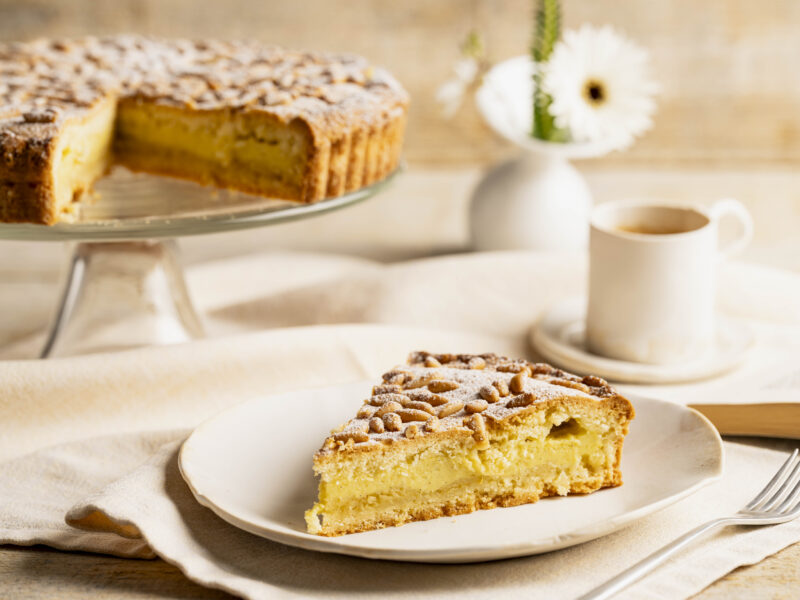
Tips for a successful torta della nonna
A well-made torta della nonna begins with care and attention to detail. With just a few simple but essential techniques, you can elevate this classic to something truly special. Here’s how to get it just right:
- Use cold butter for the shortcrust pastry and work quickly - this keeps the dough firm and crumbly. Let it rest in the fridge for at least 30 minutes.
- Prick the base with a fork before adding the filling - this prevents the dough from puffing up during baking.
- Allow the pastry cream to cool completely before pouring it into the shell - a warm filling can soften the crust.
- Rinse the pine nuts with cold water before scattering them on top – this helps prevent burning and ensures a beautifully golden finish.
- Wait until the cake is fully cooled before dusting with icing sugar - otherwise it will melt and lose its decorative effect.
- Use a tart pan with a removable bottom - this makes unmoulding easier without the risk of breaking the crust.
- Seal the edges with care - lightly moisten the bottom layer with water to help the top layer adhere smoothly.
With these tips, your torta della nonna will be as beautiful to look at as it is delicious to eat.

My version of torta della nonna with frangipane
For me, this torta della nonna is more than just dessert - it's a memory of Rome, an ode to Tuscany, and a little piece of Italy in my own kitchen. Try it for yourself, and who knows – you too might get a taste of la dolce vita.
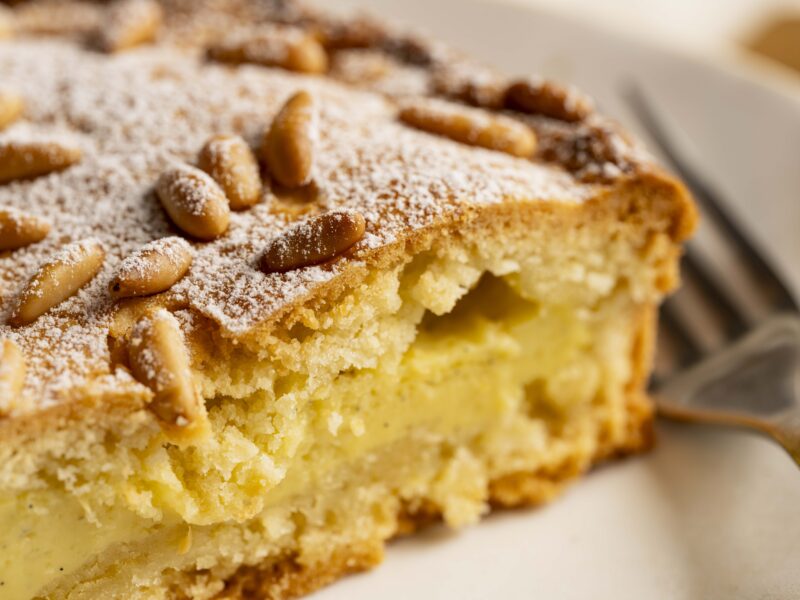
Ingredients (for a 24 cm cake):
For the shortcrust pastry:
- 300 g flour
- 150 g cold butter
- 100 g sugar
- 1 egg plus 1 egg yolk
- Zest of 1 organic lemon
- Pinch of salt
- ½ teaspoon baking powder
For the pastry cream:
- 400 ml whole milk
- 3 egg yolks
- 100 g sugar
- 30 g cornstarch
- Zest of 1 organic lemon
- ½ vanilla pod or 1 teaspoon vanilla extract
For the frangipane:
- 100 g soft butter
- 100 g sugar
- 2 eggs
- 100 g ground almonds
- 30 g flour
For the finishing touch:
- 50 g pine nuts
- Icing sugar
-
Step 1: Make the shortcrust pastry (pasta frolla)
Place the flour, sugar, salt, and baking powder in a bowl. Add the cold butter in cubes and rub it in with your fingertips until the mixture resembles coarse sand. Add the egg, yolk, and lemon zest. Knead briefly until the dough comes together – don’t overwork it. Shape into a flat disc, wrap in cling film, and chill for at least 1 hour.
![Torta della Nonna 100]()
-
Step 2: Prepare the pastry cream (crema pasticcera)
Heat the milk with the lemon zest and vanilla. In a separate bowl, whisk the egg yolks with the sugar until pale and frothy. Add the cornstarch and mix well. Temper the mixture with a little warm milk, then pour everything back into the saucepan. Cook over low heat, stirring constantly, until thickened. Cool in a cold-water bath with cling film pressed directly onto the surface.
![Torta della Nonna 101]()
-
Step 3: Make the frangipane
Cream the softened butter with the sugar until light and fluffy. Add the eggs one at a time. Fold in the ground almonds and flour with a spatula. Set aside.
![Torta della Nonna 102]()
-
Step 4: Assemble the cake
Preheat the oven to 170°C. Grease and flour a 24 cm tart tin. Rinse the pine nuts under cold water.
Roll out 2/3 of the dough into a 2 – 3 mm thick circle. Line the bottom and edges of the tin with the dough. Prick the base with a fork.
Spread half of the frangipane over the base. Stir the cooled pastry cream and layer it over the frangipane. Gently spoon the remaining frangipane on top and smooth it out.
Roll out the remaining dough and place it over the filling as a lid. Seal the edges well. Brush lightly with water and scatter the pine nuts on top, pressing them in gently.
![Torta della Nonna 103]()
-
Step 5: Bake the torta della nonna
Bake the tart in the lower part of the oven for 45 – 50 minutes, until golden and the pine nuts are lightly toasted. Let it cool completely in the tin – at least 6 hours.
![Torta della Nonna 10]()
-
Step 6: Serve
Carefully remove the tart from the tin and dust with icing sugar before serving.
![Torta della Nonna 12]()
